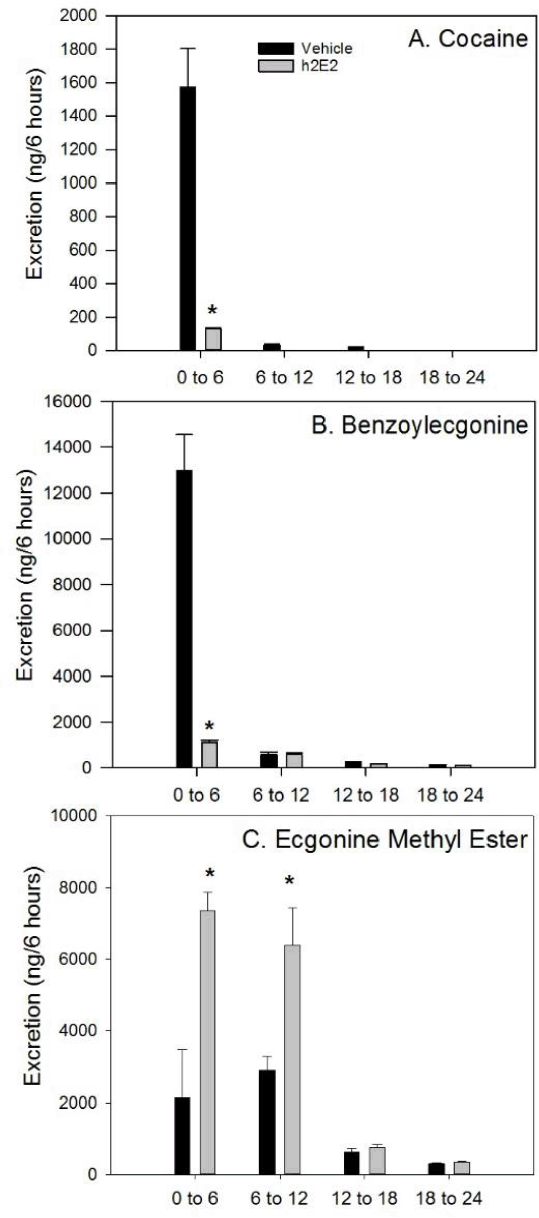| 122P London, UK Pharmacology 2017 |
A recombinant humanized anti-cocaine monoclonal antibody alters the urinary clearance of cocaine and metabolites in rats
Introduction: The measurement of cocaine and its metabolites in urine is the standard approach for measuring cocaine usage in humans. In clinical trials, these measures are used to determine efficacy for immunotherapies, such as the cocaine vaccine (1, 2). A novel humanized anti-cocaine monoclonal antibody (mAb), h2E2, is at an advanced stage of pre-clinical development for the treatment of cocaine abuse. However, h2E2’s ability to bind to cocaine could inhibit its metabolism and/or prevent urinary clearance of cocaine and its metabolites. Therefore, the aim of this study was to determine the effects of the anti-cocaine mAb h2E2 on cocaine and metabolite levels in the urine of rats.
Method: 12 adult male Sprague-Dawley rats were placed individually in metabolic cages. After a 48-hour acclimation period, urine was collected every 6 hours over 24 hours to provide a baseline measurement of urine output. A dose of 123 mg/kg of h2E2 (n=6 rats)(10 mM PBS, pH 7) or an equivalent volume of vehicle (n=6 rats)(PBS, pH 7) was infused via jugular catheter over two minutes. One hour after h2E2 or vehicle infusion, an equimolar dose of cocaine HCl (0.56 mg/kg) was rapidly injected via the jugular catheter. Rats were returned to the metabolic chambers, and urine collected every 6 hours over 24 hours. Cocaine, benzoylecgonine (BE), ecgonine methyl ester (EME) were quantified using LC-MS. All data was normalized to urine volumes to yield total excretion per 6-hour collection period.
Results: In h2E2 treated rats, cocaine and BE urinary excretion was significantly (*p<0.05, t-test) decreased by 92% and 91%, respectively from vehicle (Fig. 1A,1B). EME excretion was significantly (*) increased initially by approximately 3.4 fold by h2E2 (Fig. 1C). These results can be explained by the relative affinities of h2E2 for cocaine over its metabolites as well as h2E2’s limited distribution largely to the blood volume.

Conclusions: In conclusion, due to the decrease in cocaine and BE urinary excretion, cocaine and BE are not appropriate measures of cocaine usage in the presence of h2E2. Therefore, in the future clinical trials of h2E2, EME would be the most appropriate measure for cocaine usage. These results imply that the design and interpretation of urine end point measures in the clinical trials of other immunotherapies for drugs such as methamphetamine, should be carefully considered.
References:
(1) Kosten, T.R., et al. (2014). Drug Alcohol Depend 140: 42-7.
(2) Martell, B.A., et al. (2009). Arch Gen Psychiatry 66: 1116-23.

